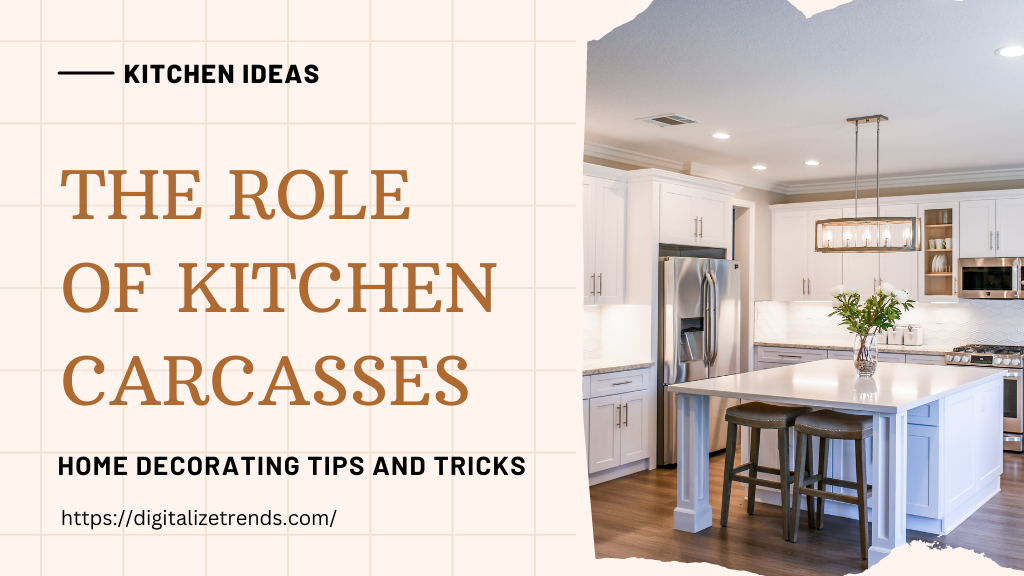The kitchen design market in Australia is a competitive and diverse industry. It encompasses various products and services, including kitchen cabinetry, appliances, countertops, and lighting. Kitchen carcasses are a critical component of kitchen cabinetry. They provide the internal framework supporting external finishes, such as cabinet doors and drawers. In addition, many Australian homeowners buy customised carcasses from IKEA hacks in Australia to create sustainable kitchen carcasses on a budget.
In this blog, explore the role of kitchen carcasses in creating a sustainable home and how they can be incorporated into your kitchen design.
Longevity and Durability
Investing in high-quality carcasses means that your kitchen cabinets will last longer. This longevity and durability have several positive impacts on sustainability:
Reduced Waste: When kitchen cabinets are built to last, there is a reduced need for frequent replacements. This may navigate to a decrease in the amount of waste generated. By avoiding the disposal of old cabinets and producing new ones, you reduce waste.
Conservation of Resources: Durable carcasses help conserve the resources used in production. By choosing materials that withstand wear and tear over time, such as solid wood or plywood, you minimise the need for additional raw materials in replacements.
Energy Savings: The longer your kitchen cabinets last, the less energy is required for the production, transportation, and installation of new ones. These energy savings can have a positive environmental impact by reducing greenhouse gas emissions associated with manufacturing processes.
Sustainable Materials
The choice of materials used in carcasses significantly affects their sustainability. Consider the following options for sustainable materials:
Responsibly Sourced Wood: Opting for carcasses made from wood certified by organisations like the Forest Stewardship Council (FSC) ensures that the wood comes from responsibly managed forests. This certification guarantees that the wood is sourced sustainably, considering factors like biodiversity, local communities, and forest regeneration.
Recycled Materials: Using recycled materials in carcasses helps reduce the demand for new resources. For instance, particleboard made from recycled wood fibres can be eco-friendly. This material utilises waste wood that would otherwise end up in landfills.
Low VOC (Volatile Organic Compound) Options: VOCs are chemicals that are emitted by certain materials, including some adhesives and finishes. These chemicals may contribute to air pollution and affect indoor air quality. Opting for carcasses with low VOC emissions promotes a healthier living environment and reduces the negative impact on the environment.
Reducing Waste
The ability to minimise waste is a crucial aspect of sustainable kitchen design. Here’s how carcasses contribute to waste reduction:
Extended Lifespan: Choosing high-quality carcasses built to withstand the test of time helps extend their lifespan. This reduces the frequency of replacements and the associated waste generation.
Repairability: Carcasses made from durable materials are often more repairable. In the event of minor damage, repairing or refinishing the carcasses becomes possible instead of replacing them entirely. Repairing and maintaining existing kitchen cabinets contribute to waste reduction and resource conservation.
Recyclability: Opting for materials like plywood or particle board enables recycling at the end of the kitchen cabinets life. These materials can be easily recycled or repurposed, diverting them from landfills and reducing waste.
By considering the longevity and durability of carcasses, selecting sustainable materials from IKEA hacks in Australia, and focusing on waste reduction, you can make significant strides towards creating a more sustainable kitchen and home overall.
Conclusion
Kitchen carcasses from IKEA hacks in Australia help in a significant role in creating a sustainable home. Investing in high-quality materials and choosing responsible sourcing and manufacturing practices can reduce waste and contribute to a healthier planet. Additionally, incorporating sustainable carcasses into your kitchen design allows you to design a space that is tailored to your needs while being environmentally friendly.
Read more:
11 Ways Technology is Transforming the Healthcare Industry



